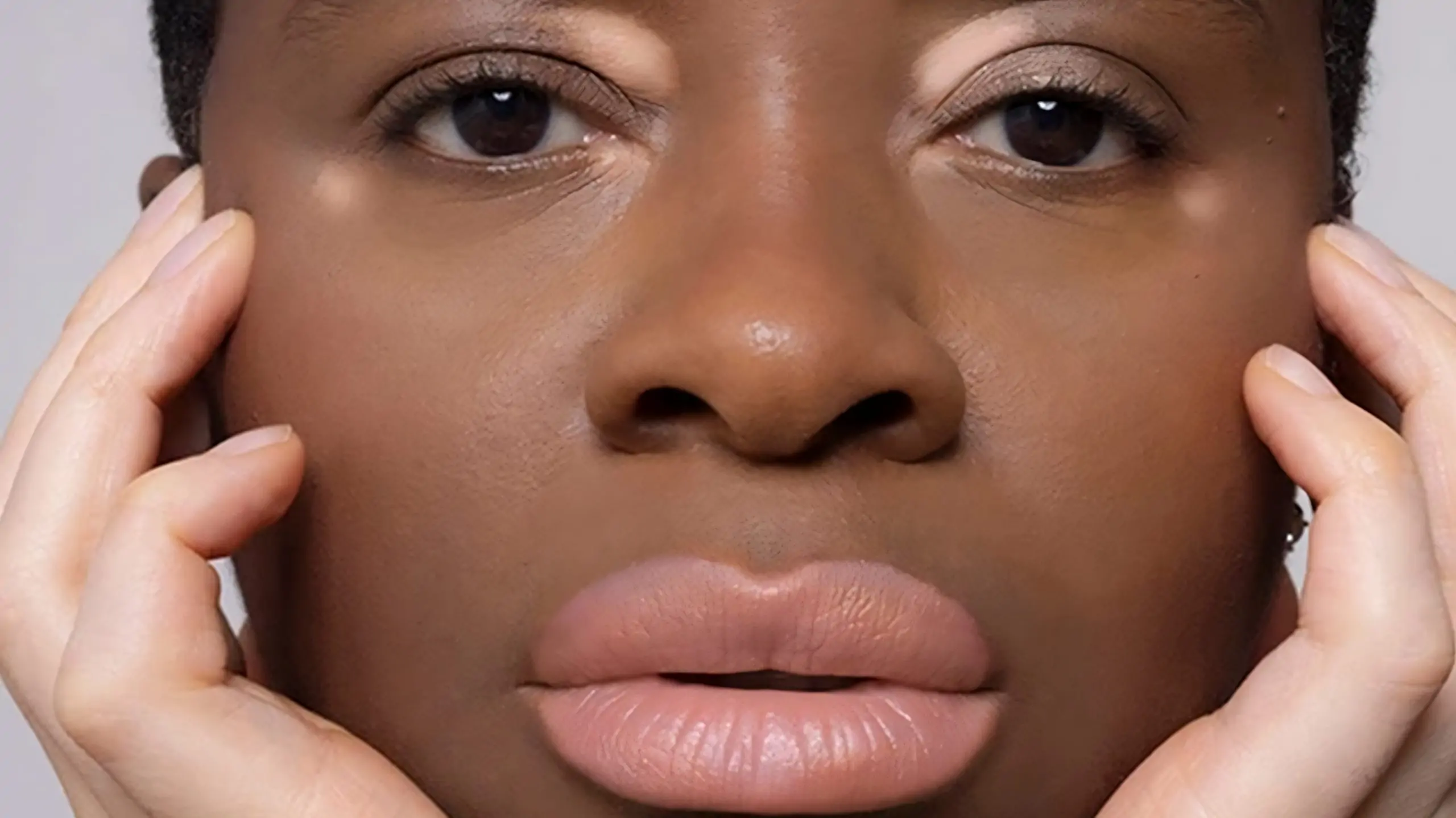We live in an era where anyone can claim the title of photographer by simply pulling out a smartphone, aiming at a subject, and capturing an image. This act, once an art form requiring skill and patience, has become astonishingly simple.
However, true photography surpasses this simplicity; it involves a combination of technical expertise with cameras, lighting, and lenses, plus the capacity to conceptualise and, more crucially, artistic vision. This vision is more than seeing—it’s an instinct, a path of interpretation, transforming the mundane into something memorable, seizing moments as if to freeze time, seeing beyond what lies before the eyes.
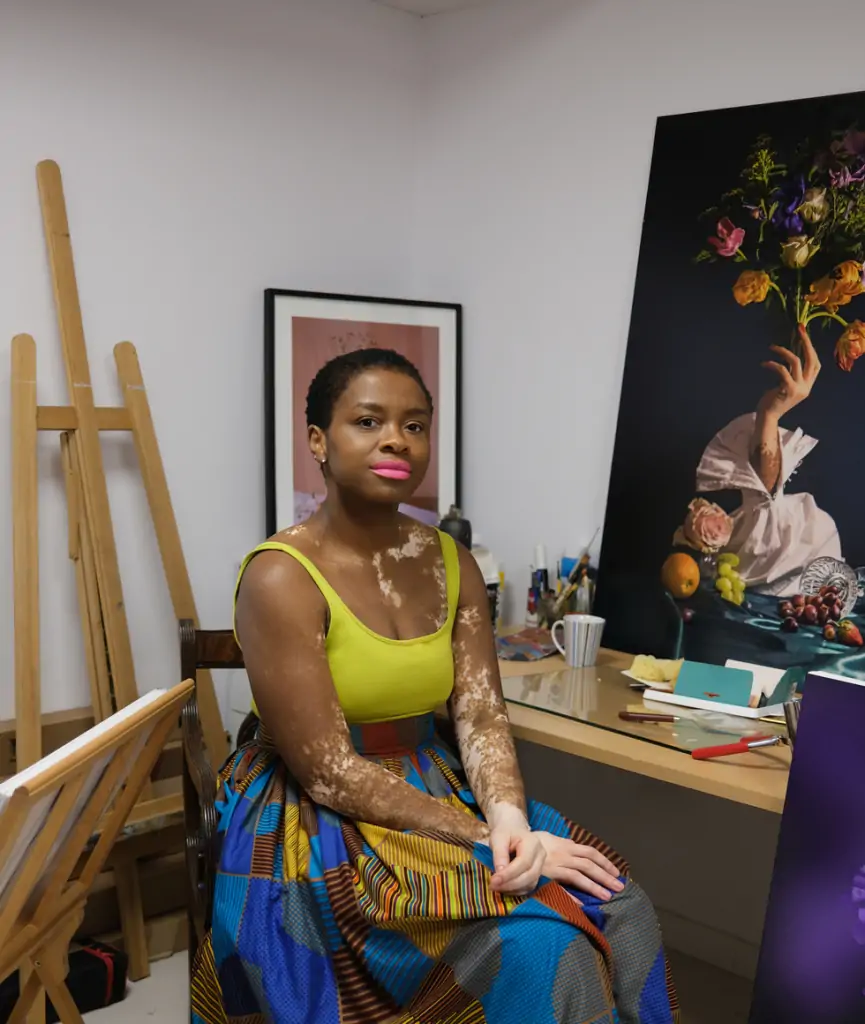
Credit Jon Chadwick
Image courtesy of Violeta Sofia
Sometimes, a photograph alone can convey my thoughts; other times, the depth of expression requires the added layers and textures of paint
Violeta Sofia
Framing this significance elevates a mere photograph into a masterpiece; it’s where art, science, and intuition connect—a delicate balance of alchemy where photography becomes fine art. We witness this essence in the practice of Cameroonian-born photographer and artist Violeta Sofia, cultivated from her years behind the lens; her craft of capturing experiences is renowned from her intimate portrait sittings with celebrities to her fashion and beauty compositions.
Informed and inspired by her heritage, Sofia’s journey as an artist is woven with multicultural threads and breeds creative agility that’s second to none. This creativity shines radiantly within her works; her choice of fusing paint and photography intertwines seamlessly. It also highlights beauty in what some might see as indifference, an aspect that is pivotal in her approach and practice. Mirroring her personal experience with vitiligo—a condition she was born with that has become an integral part of her identity and expression.
In her fearless Hand Master Series, Sofia secludes herself in still-life scenes, revealing only her hands. Her execution, reminiscent of the old masters‘ paintings, is imbued with a contemporary flair. The natural art created by vitiligo across her skin dances in unpredictable harmony. Themes of diversity, acceptance, and self-love are delicately complimented by lighting and shadow, emphasising every patch and streak of her skin, empowering her narrative of difference and identity intricately woven into her work, adding depth and warmth, making each piece as captivating as it is thought-provoking.
An award-winning photographer, Sofia is also an activist championing female inclusivity and representation in the arts; Sofia has also exhibited her work in renowned institutions such as the National Portrait Gallery and Christie’s. Most recently, her work was featured in “Reframing Narratives,” curated by Flavia Frigeri. Consequently, it resulted in a permanent exhibition at the National Portrait Gallery titled “New Visions and Voices: Contemporary Portraits by Women.”
Sofia’s practice serves as a rich vessel for storytelling and self-expression, bridging cultural divides, celebrating the beauty of diversity, challenging stereotypes and spotlighting the experiences of women of colour.
It might be cliché to say that a picture tells a thousand words, and Sofia’s work embodies this adage, through her lens. We caught up with Sofia to learn more about her practice, inspiration, and more.
Hi Violeta, could you share with us your personal journey and how you ventured into the world of photography?
Violeta Sofia: I’ve always been drawn to artistic expression, a passion cultivated since childhood through multiple art crafts, especially painting. My father, an avid art enthusiast, instilled in me a love for creativity, whether through drawing, videography, or his greatest passion, photography. At the age of 8, I embarked on my own photographic journey, inspired by the deep connection it fostered with my father and the world around me.
During my teenage years, I found myself even more drawn to photography. I was full of ideas and concepts, and photography provided the quickest outlet for bringing my creative visions to life. As I progressed into college, it felt like the most organic step for me to delve deeper into fine art and photography, continuing to explore and expand upon my passion.
Photography offers me a unique avenue for expression that painting couldn’t quite capture, and vice versa. For me, art is about conveying a message in the most impactful way possible, utilising whichever medium best suits the narrative I wish to share. Sometimes, a photograph alone can convey my thoughts; other times, the depth of expression requires the added layers and textures of paint. This interplay between photography and painting is evident in works like “The Hand Master Series“, where I seamlessly blend both mediums to articulate my vision.
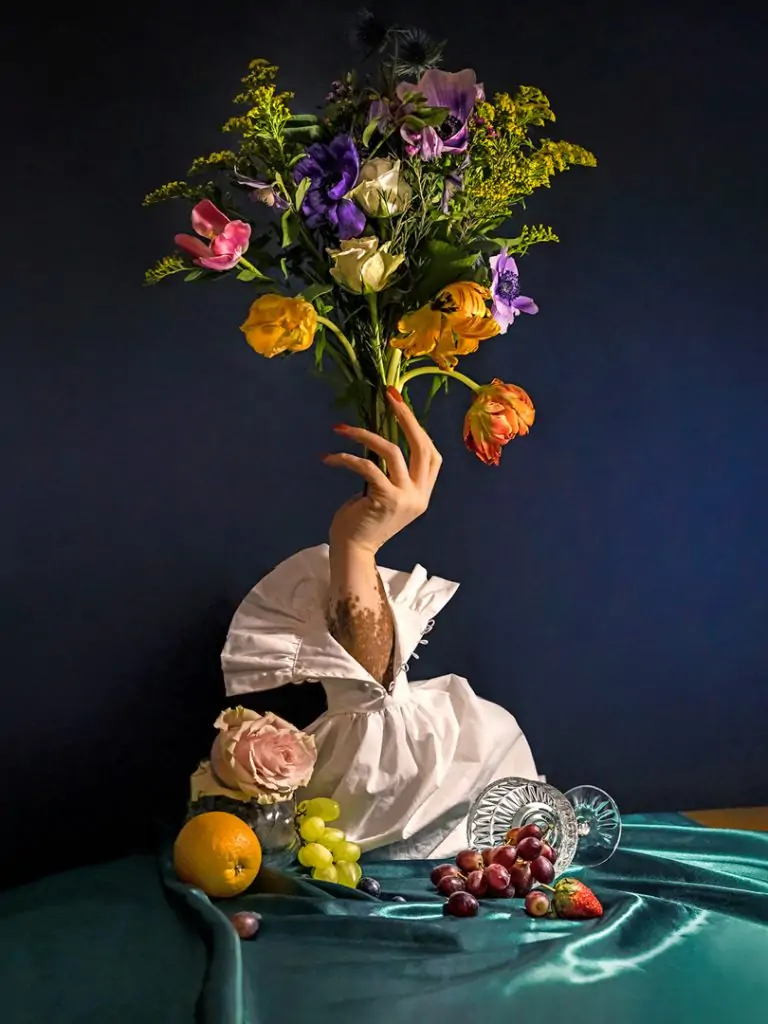
Image courtesy of Violeta Sofia
What drove you to embrace a career in this field?
Violeta Sofia: For many years, I hesitated to fully commit to art. Growing up in Spain and influenced by school teacher’s discouraging words—that a creative career was a path to nowhere, reserved for the lazy—I internalised this belief, allowing it shape my cautious approach to an artistic career. It wasn’t until I was 27, after exploring various career paths such as teaching, waitressing, and roles in customer service, that my frustration, curiosity, and a certain hopefulness led me to a pivotal moment in need for change.
I decided to return to education as a way of getting back into photography. After two years of university, I left my degree program to embark on as a part-time freelance photographer. Then, a few years later, I chose to “go big or go home” by confronting my fears head-on, and dedicating myself wholly to an artistic career, as other career paths were getting in the way.
At the beginning of my career, my commitment to art and photography experienced its ups and downs, yet I’ve never ceased to create. These mediums have been more than mere pastimes; they’ve been essential to my happiness and sense of purpose. Despite facing daunting moments and contemplating giving up numerous times, I couldn’t abandon my passion. That’s why I firmly believe that I didn’t choose to pursue a career in the arts; rather, the art pursued me. I feel very fortunate because otherwise, I wouldn’t be an artist today.

Image courtesy of Violeta Sofia
Building on that question, how has your Cameroonian heritage and growing up in Madrid influenced your artistic vision and approach to photography, particularly in terms of the specific aspects of visual arts that captivated you?
Violeta Sofia: My artistic work is a diverse tapestry deeply influenced by my journey and upbringing. Born into a Cameroonian family and raised in Madrid, my early experiences and cultural background have significantly shaped my creative vision and approach. However, it was my move to London and the completion of my education, that allowed me to broaden my spectrum of influences, embracing a more diverse array of inspirations.
From a young age, I was steeped in the works of artists like Miró, Velázquez, and Goya, and later, Picasso and Dalí. While I admired and respected these artists, I often struggled to find a personal connection to their work as a young person. Nonetheless, elements of their styles and themes subtly permeate my own artistic endeavours. Relocating to the more diverse city of London at 16, opened up new horizons for me, sparking an interest in pop art. Despite the prevailing emphasis on Western male artists in my London education, I took the initiative to explore beyond these boundaries.

Image courtesy of Violeta Sofia
I sought out female photographers like Barbara Kruger and learned from my parents about influential figures such as Cameroonian photographer and artist Samuel Fosso, and I loved that I was able to integrate these discoveries into my academic research. Having left Cameroon when I was just a few months old, initially, my connection to my heritage was largely drawn from my mother’s stories and her deep pride in our culture.
Now, narratives with African symbolism, colours, and textiles are vividly reflected in my art. Through my work, I aim to convey the beauty and complexity of my Cameroonian heritage, blending it with the diverse influences that have shaped my identity and individual journey as an African diaspora artist.
Your work is known for its simplicity and elegance, particularly when capturing the intimate essence of your subjects. Can we delve deeper into your practice and process, including your choice of camera and lens?
Violeta Sofia: My portraits are often described as serene, a quality I deeply value as it reflects the comfort and ease I strive to create for my subjects. My inspiration comes from photography characterised by its simple composition, aiming to present images that are easily understood by viewers without any distracting elements.
Currently, my preferred camera is the Canon R5, coupled with my go-to lenses: the versatile 24-70 mm and the 100mm macro lens, which I’ve recently grown quite fond of. My approach to photography and art isn’t driven by technicalities; rather, I am guided by intuition and the visual or emotional impact of what’s before me. I enjoy being spontaneous when dealing with technicality, seeking to play with contrast to sculpt form and shape within my compositions.
Continuing from this, you are recognized for your use of vibrant colors in your work. Can you describe your process for selecting the color palette for projects? Additionally, how has drawing inspiration from the lighting styles of old masters directly influenced a specific piece or project of yours?
Violeta Sofia: I was taught studio lighting by portrait photographer David Montgomery, and he loved to teach the Rembrandt three-quarter light.
When I began my photography journey, this was the primary lighting technique I employed. I was drawn to the way it enveloped the subject, establishing mood and contrast. This led me to delve deeper into the techniques of the old masters. Studying artists like Rembrandt, I discovered the profound impact of light and shadow on creating drama, depth, and atmosphere in my photographs.
Interestingly, as a young person, I didn’t appreciate this style of art and felt compelled to learn it. However, over time, my perspective shifted, and now I seek to reimagine the works of the old masters through my own series of Dutch floral Pieces titled “Hand Masters.”
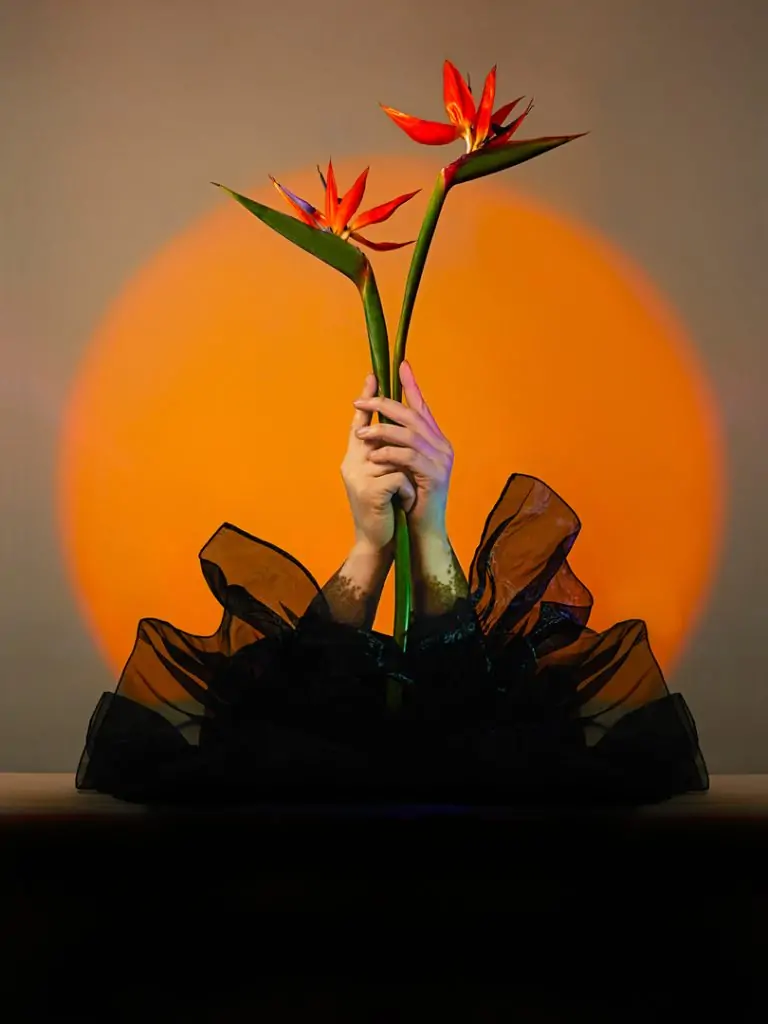
Image courtesy of Violeta Sofia
Your fashion photographs and celebrity portraits are highly acclaimed. What do you believe sets your work apart in the highly competitive field of celebrity photography?
Violeta Sofia: I take pride in the distinctiveness and uniqueness of my Hand Masters. Viewers connect deeply with the vulnerability portrayed in each piece, often seeing reflections of their own vulnerabilities. In my celebrity portraiture work, I prioritise establishing a comfortable rapport with the sitter. This allows the subjects to feel at ease and enjoy their sessions, fostering a positive environment. As a result, many of my clients return for repeat sessions, appreciating the way I handle their talent.
My approach is deeply rooted in finding authenticity and connection. Whether capturing a celebrity’s portrait or creating fine art pieces, I strive to convey genuine body language in every image.
Even though aesthetic is important, I aim very interested in going beyond that. I want to know about the person that I am photographing; I want to know about their human experiences and identity.
Additionally, my background as an activist and advocate for inclusivity informs my artistic practice. I am committed to challenging stereotypes, amplifying underrepresented voices, and fostering empathy and understanding through my work. This perspective infuses my portraiture and fine art photography with a unique depth and resonance. Overall, I believe these elements is what sets my work apart in the competitive fields of portraiture and fine art.
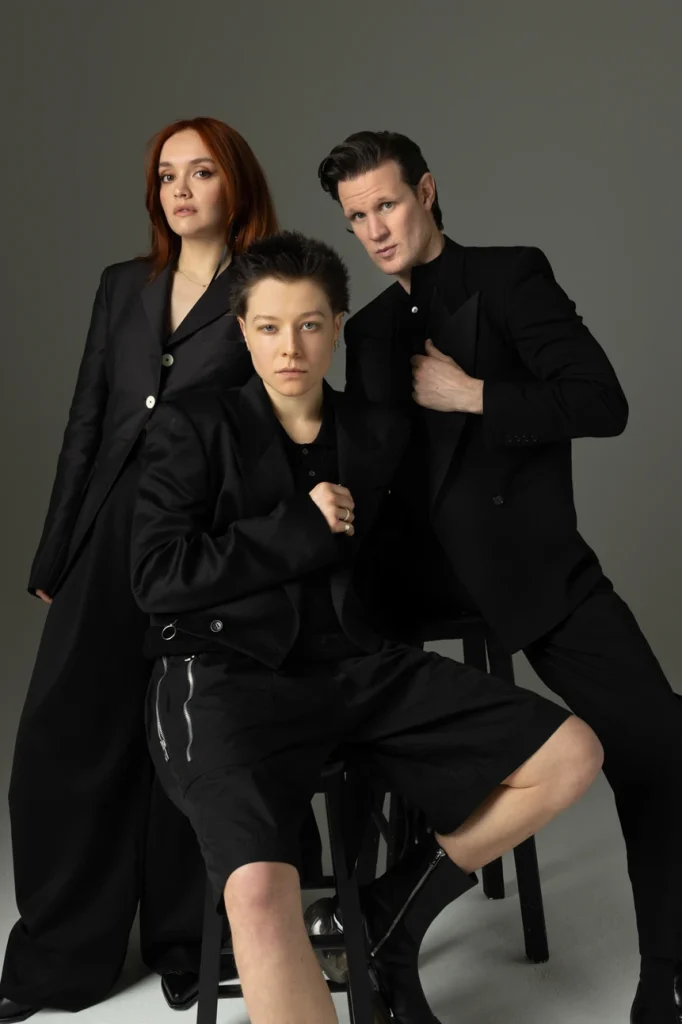
Olivia Cook, Emma D’Arcy, Matt Smith, Paddy Considine
Image courtesy of Violeta Sofia
Having photographed many well-known celebrities and public figures, what has been your most memorable shoot and why?
Violeta Sofia: Answering that question is quite challenging as I’ve had numerous memorable shoots, each for different reasons. Some have been particularly challenging, some emotionally stirring, while others have led to lasting friendships.
One of the most challenging shoots I’ve experienced was with the Crown actors Emma Corin and Josh O’Connor for a cover story. COVID restrictions mandated that they be photographed separately and on different days, adding a layer of complexity to the process. Moreover, time was not on our side, with very little room for error.
Despite these logistical hurdles and time constraints, I approached the shoot with composure, or at least I like to think so.
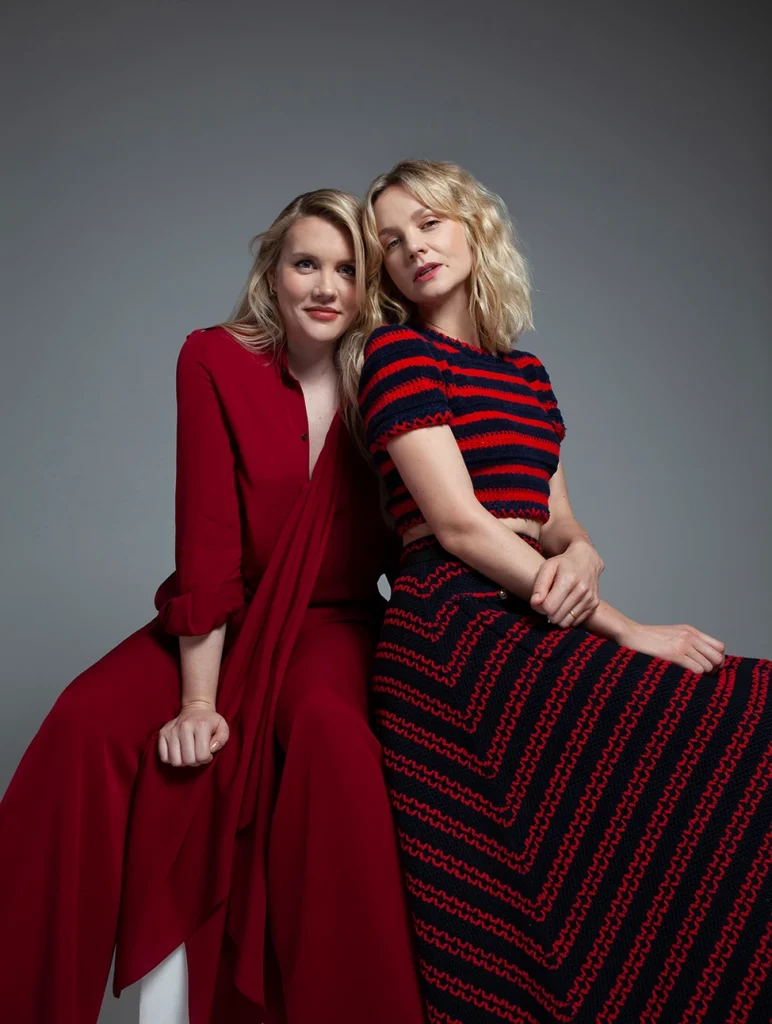
Image courtesy of Violeta Sofia
Inspired by Annie Leibovitz, I worked tirelessly to create the illusion that both individuals were in the same space, meticulously planning every detail to achieve coherence in the final images. Although the creative director initially suggested a studio setup for its convenience in collaging the two actors, I opted for a lifestyle setup. Ultimately, I’m proud of the images we captured, and I’m grateful that I did
choose the easies path, even if it meant facing additional challenges along the way.
Another memorable moment was photographing Emerald Fennell and Carey Mulligan. I nearly declined the shoot due to being double booked. Despite the initial conflict, I decided to proceed, and the result was truly remarkable. A photograph from that session was later acquired by the National Portrait Gallery—an achievement that I’m immensely proud of.
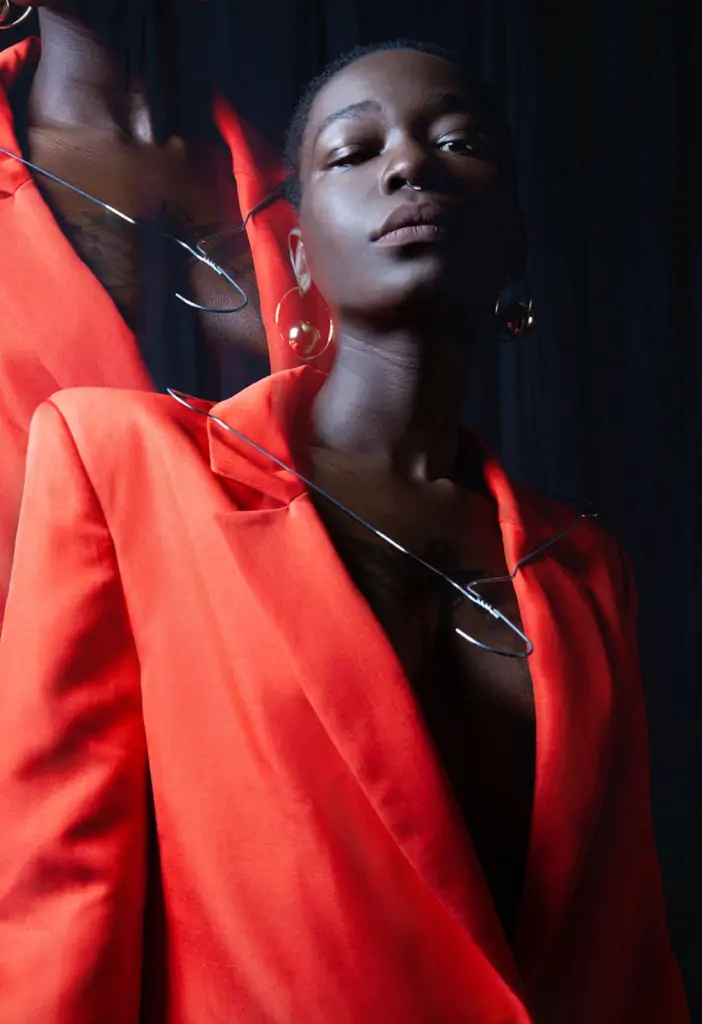
Your work was featured in ‘Reframing Narratives’ at the National Portrait Gallery, leading you to propose a project to curator Flavia Frigeri, focusing on greater inclusivity. This evolved into the permanent exhibition ‘New Visions and Voices: Contemporary Portraits by Women’ in Room 31. Could you tell us more about this exhibition and the journey leading up to it?
Violeta Sofia: Following the success of the NPG inaugural exhibition “Reframing Narratives,” which featured my work as the sole contemporary photographer of colour, I proposed an ambitious project to Flavia Frigeri, the exhibition curator. This project emphasised the critical need for greater inclusivity within the art world. The conversation resulted in the creation of the current permanent exhibition titled “New Visions and Voices: Contemporary Portraits by Women.” My involvement with the National Portrait Gallery began in 2021 during the gallery’s preparations for its reopening after three years of refurbishments.
As my works were being acquired, I raised a significant question: were there other contemporary black female photographers featured? This inquiry sparked a dialogue about representation in the arts, leading to the conception of an inclusive project aimed at amplifying the voices and perspectives of more women of colour in photography.
The exhibition is a groundbreaking showcase of female photographers and sitters, with a particular emphasis on women of colour. It features renowned photographers such as Ronan Mckenzie, Nadine Ijewere, and many others. This exhibition stands as the second major female photography event since the gallery’s grand reopening.
Having worked with companies like Harvey Nichols and Kurt Geiger, as well as prominent magazines like Vogue and Elle, how do you balance commercial demands with your artistic vision? How do you ensure that your artistic integrity and vision are maintained in high-pressure, commercial environments?
Violeta Sofia: I always try to infuse commercial work with elements of my artistic style and perspective. When working with clients, most times they want you to communicate your artistic vision and I try to be transparently from the outset. Ultimately, it’s about finding equilibrium between the brand, my artistic voice and resonating with the audience.
How do you see the intersection of photography and issues of identity and race evolving in the future, and what role do you wish to play in this evolution?
Violeta Sofia: The landscape has evolved significantly since my teenage years. Back then, representation was scarce, and opportunities for black female photographers were limited. However, I’m heartened by the positive shifts I’m witnessing today, with some talented black female photographers achieving remarkable success at a relatively young age. Despite these advancements, there is still much progress to be made.
-Firstly, I aim to continue using my platform to amplify marginalised voice. Through my work, I strive to challenge stereotypes, dismantle harmful narratives, and foster empathy and understanding across cultural divides.
-Additionally, I mentor and empower emerging photographers from underrepresented backgrounds by providing them with work experience
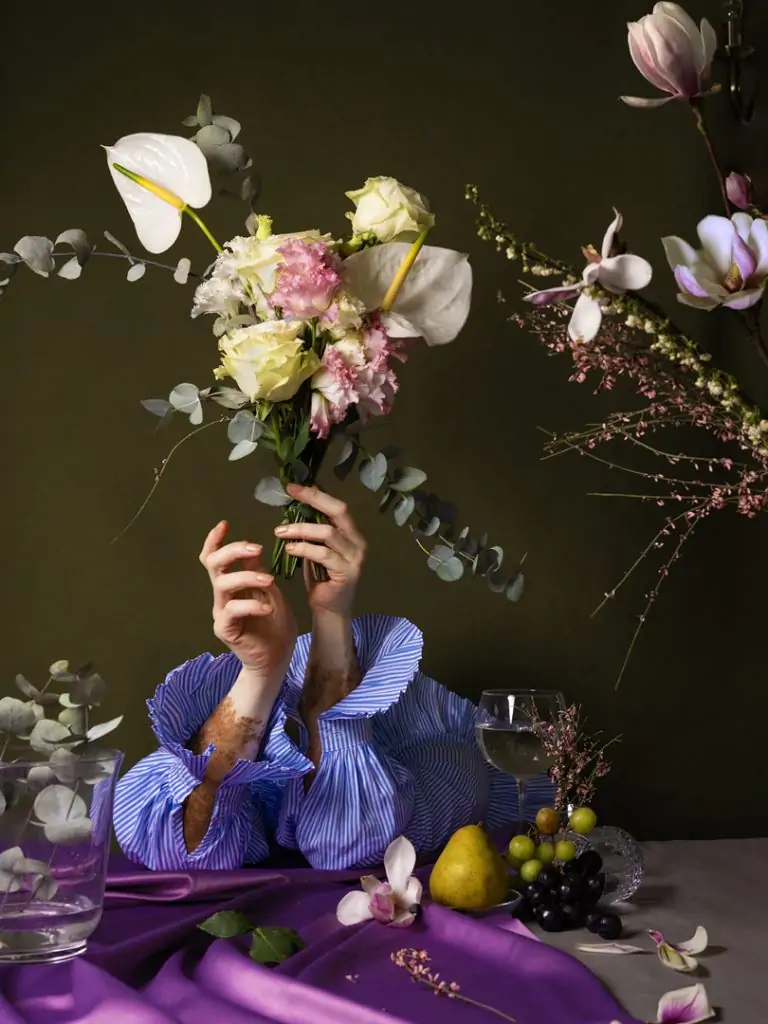
Lastly, what do art and photography mean to you? Do you see these as two separate entities or as one form of expression?
Violeta Sofia: In my practice, I view art and photography as complementary forces that enrich and inform one another.
©2024 Violeta Sofia


